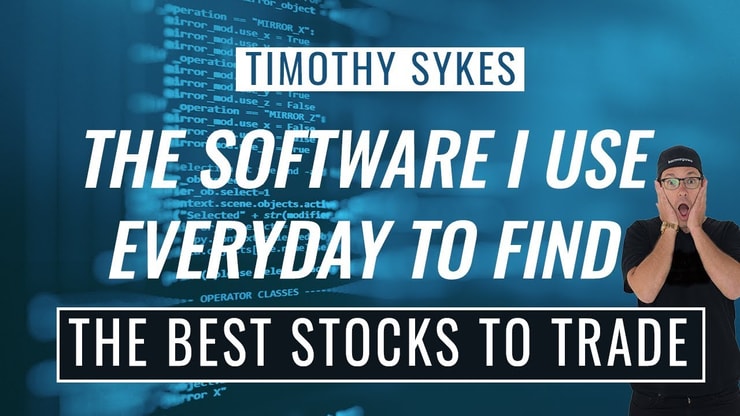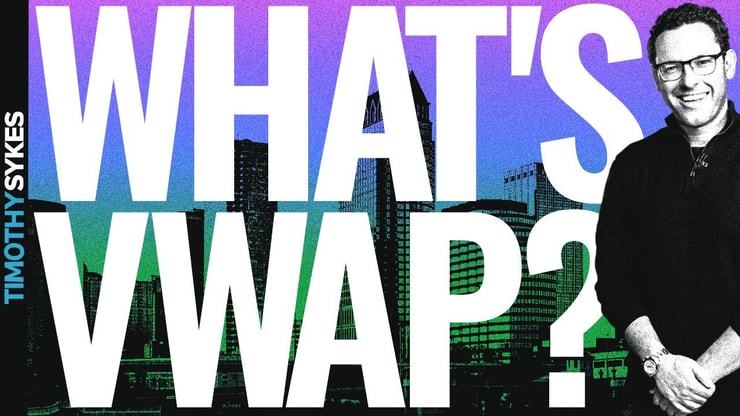What do you know about day trading software? There’s a ton of options out there. So traders need to know their options and how to find the software or platform that best suits their trading style.
Software can be like your toolbox for trading. It can help you improve — but you gotta learn how to use it.
Find software that fits your needs and trading. Some traders might only trade on the Nasdaq. Others, like me, love to trade penny stocks on the OTC markets. In that case, some software could have restrictions.
There’s a lot to consider, but don’t overthink it. Most traders are looking for a few key things: user-friendliness, quality tools, and reliable executions.
So let’s take a look at some of the top options for day trading software…
Table of Contents
What Is Day Trading Software?

2025 Millionaire Media, LLCI’ve been trading for over 20 years now. Watching the software evolve has been crazy.
Back in the day, the options were limited. Most charts were clunky and slow. Any time you wanted to trade, you had to call a stockbroker. It sucked. But now, things are different.
Everything can be done with the click of a few buttons. There’s a lot of software available, and the top brokers are usually reliable. Day trading is very streamlined. Don’t take it for granted!
Now, what is day trading software?
It’s the platform that connects you to a broker, and it’s usually accessible on a computer or a smartphone.
You can use day trading software to access several different markets — Nasdaq (NASDAQ), American Express (AMEX), the OTC markets, and more.
There are many ways to customize your trading software. Chart tools, news feeds, indicators, and Level 2 quotes are just the tip of the iceberg. Make sure you’re comfortable with the software you choose … You’ll likely use it every time you trade.
Some software platforms offer hundreds of tools. But for new traders, finding reliable software should be a top priority. Fancy tools are great, but quality order executions are more important.
Now let’s take a look at some software options…
Before We Move On
I’ve gotta tell you about our StocksToTrade platform. Yes, I’m invested in this day trading software. That’s because I helped design it and I LOVE it. If you’re learning how to trade penny stocks, it can be very helpful.
StocksToTrade is a user-friendly platform with everything you need to get started. It can help take the stress out of learning the basics.
Its real-time data can help you get ahead of the pack. Plus, the Breaking News Chat add-on feature is a game-changer. It can bring you useful information in the blink of an eye.
And for beginners, StocksToTrade has a paper trading option. I recommend all new traders practice on paper. You can sharpen your skills without risking real money.
StocksToTrade is not a broker, but it does include broker integration. You can link it to one of several brokers. That means you won’t have to ditch the beautiful charts or user-friendly tools.
Sign up for StocksToTrade today!
How Does Day Trading Software Work?
You can use day trading software to buy and sell stocks. You can also short stocks, but that can be dangerous for beginners. I wouldn’t recommend it until you have a lot of experience.
You can use day trading software to build a trading setup. A trading setup is a collection of tools you can use to watch charts, place orders, and more.
There’s a variety of trading styles out there. But most of them have one thing in common … an order box.
An order box is one of the most basic software tools. Traders enter the quantity of stock they want to buy and use stock order types to customize the order.
When you submit an order, the information is sent to the broker. And the order is filled accordingly.
But in 2020, day trading software can do much more than just fill orders. By using charts, you can watch penny stock patterns develop in real time. Also, some software offers breaking news, which can help you spot a good setup quickly.
New to trading penny stocks? Get my free online guide here.
What Makes Good Day Trading Software: Features and Functionalities
Finding the best software might feel overwhelming. But no matter which option you choose, make sure it includes a few key components.
Here’s a handy graphic to help you. Study it, then read on for more information.
More Breaking News
- Alibaba Shares Encounter Turbulence Amid Trade War
- BOOT Stock Surge: A Buying Opportunity?
- Iamgold’s Unexpected Surge: Analyzing Performance
Charts
Most day traders use charts every day. They’re essential to any good trading setup. Many trading strategies involve finding patterns on a chart. If you trade penny stocks, like me, the chart basically tells you everything.
Before you choose a day trading software, make sure you’re comfortable with the charts. Are they easy to read? Do they give you enough information? Ask yourself questions like these beforehand. Otherwise, you might deal with the hassle of changing software or brokers.
Charts are your guide to approaching a trade. Some chart styles might not appeal to you. Finding the right one may help you trade more effectively.
The strategies I use, like breakouts and dip buys, depend on having good charts. So find quality charts and start practicing!
Order Executions
This is very important. An order execution happens after you submit an order to buy or sell a stock. The order is executed/filled according to the stock order type, price entered, etc.
You gotta find a reliable broker. This is your hard-earned money — don’t put it at risk with crappy software. Find software that fills your orders efficiently.
Some new traders just want low commissions, and that’s fine. But never use a sketchy broker just to save a few bucks.
Sometimes, opportunities happen fast. You gotta be prepared. If your software has slow order executions, you could miss out on plays. Or maybe you have a stop-on-quote order in place … if it doesn’t execute properly, you could experience slippage.
Learn how to navigate these crazy markets … Get my “Volatility Survival Guide” now!
Real-Time Data
Some day traders use software with a time delay. The data can be five, 10, or even 20 minutes behind. I don’t recommend this.
Several options offer real-time data. Charts and price action update every second.
If you want to become a self-sufficient day trader, real-time data is pretty standard. Without it, you might be giving up an edge. When a good opportunity presents itself, you want to see a live display of the price action.
People who use delayed data can have a hard time nailing an entry. It’s hard to follow a trading plan when the data is lagging.
If you miss a move because of delayed data, you might feel obligated to chase the stock higher. Don’t put yourself in that position. That’s how a lot of traders can lose money. Make sure to use real-time data.
VWAP
This is a popular tool you might’ve heard about. VWAP is an acronym that stands for volume-weighted average price. It tells you the average stock price that shareholders own at any given time.
Think of it like adding up the total value of stock purchased in a trading period, divided by the total number of shares purchased in that time.
VWAP is usually represented by a red line on a stock chart. It reacts to price action. When people buy higher, it raises VWAP. When they buy at cheaper prices, VWAP is lowered.
This tool is available with most day trading software, and I highly recommend you consider using it.
In certain situations, it can be essential. With certain penny stock patterns, VWAP can act as a support level of its own.
If the price is dropping but finds support at VWAP, traders will more than likely see this as a sign of strength. It typically means there’s more buying than selling.
If a stock drops below VWAP without any support, it can mean weakness. This could cause further selling and lead to a dip in the price.
Stock Scanners
Stock scanners can filter stocks based on certain criteria. Setting preferences may help you find a good pattern without sifting through the whole market.
You can find charts based on volatility, price change, volume, and more. There are so many ways to customize them. Me? I like to look for the top percent gainers. It’s usually a part of my trading plan.
Day traders constantly have to focus. Every minute counts! There’s usually not enough time to look through hundreds of charts. Scanners are best used when you want to narrow down your options.
If you’re not part of a community, scanners might help even more. You’ll usually be exposed to fewer stocks on your own. Using a scanner can help make up for that.
E-Trade and TD Ameritrade both offer scanning tools … but they’re no match for StocksToTrade. In my opinion, it’s way more effective and user-friendly.
The 3 Top Software Platforms for Day Trading

2025 Millionaire Media, LLCTD Ameritrade
TD Ameritrade offers day trading software called thinkorswim. It’s a popular, user-friendly platform that can be great for beginners.
If you’re just starting to learn, they offer paper trading.
Thinkorswim doesn’t require an initial deposit or account maintenance fees. This can be great for a trader with a small account. They’re also known for having great customer service.
There are over 300 charting tools to choose from, as well as a drag-and-zoom feature on the charts. This is unique to thinkorswim — it can help with viewing small areas of price action on a chart pattern.
And you can link thinkorswim to StocksToTrade.
E-Trade
E-Trade is another popular software that requires no initial deposit. With a margin account, you need at least $2,000 to start.
This software is easy to learn. Users can usually put together an effective trading setup in a short amount of time. They offer all the essential tools — Level 2 quotes, fast charts, and more.
E-Trade is known for having great order executions. That’s something every day trader should be looking for.
They offer commission-free trades on all listed stocks and charge $4.95 on OTC stocks. That’s lower than TD Ameritrade, and you aren’t sacrificing reliability.
You can also link E-Trade to StocksToTrade.
StocksToTrade
StocksToTrade is gaining popularity fast. Maybe it’s the high-quality charts or the top-of-the-line Breaking News Chat tool. In so many ways, it’s tailored to day traders.
In my opinion, this day trading software is among the best.
StocksToTrade is not a broker.
However, it offers broker integration. This means you can link it to your E-Trade or TD Ameritrade account. That gives you the reliability of a good broker and the awesome features of StocksToTrade.
If you’re new to day trading, StocksToTrade can help take the struggle out of learning the basics. It’s data-driven and can bring you useful information fast.
It offers very convenient scanning software … it could save you a ton of time. What more could you ask for? Sign up for a 14-day trial here.
Trading Challenge
If you’ve got the dedication, check out my Trading Challenge. You have to apply — I only accept the hardest workers. If you’re just looking for hot stock picks, there’s plenty of promoters out there.
I teach my students how to trade penny stocks. This year, I passed $6 million in profits, and I now have several six- and seven-figure students.* I’ve become self-sufficient by using a handful of trading strategies.
I share all my trades every day in the Challenge chat. I’m proud to be transparent. In this industry, it’s very rare.
Everything I’ve learned in 20+ years of trading goes into my Challenge. There’s so much educational material, including 6,000+ videos, tons of webinars, and more. You’ll have the opportunity to learn from me, my top students, and your peers.
Apply today and start your journey!
(*Please note: My results, along with the results of my top students, are far from typical. Individual results will vary. Most traders lose money. My top students and I have the benefit of many years of hard work and dedication. Trading is inherently risky. Do your due diligence and never risk more than you can afford to lose.)
Conclusion

2025 Millionaire Media, LLCThe best day trading software depends on how you trade. Find software that balances quality charts, reliable order executions, and real-time data. All of these can help keep you safe while trading.
If you settle for sketchy software due to low commissions, you’re putting yourself at risk. One bad order fill could lead to a big loss, possibly taking out several singles. Don’t take a chance!
And don’t overthink it. There’s no right answer in the markets, just what works right for you. You’ll learn the most from trying and seeing what clicks. You can’t beat experience.

Be aware of your trading style … your choice of software could impact your progress.
Study as much as possible. Getting the best education is something I encourage all my students to do. Take advantage of learning opportunities and never give up!
Also, knowing what to watch can be very helpful. Sign up now to get my no-cost weekly watchlist.
What do you think about these day trading software options? Let me know in the comments!









![Image for How Pros Trade Penny Stocks [Infographic] recomended post](https://content.timothysykes.com/cdn-cgi/image/quality=80,format=webp,width=172/https://content.timothysykes.com/wp-content/uploads/2018/05/Screen-Shot-2018-05-05-at-11.58.34-AM.png)
![Image for The Top Performing Mutual Funds [Infographic] recomended post](https://content.timothysykes.com/cdn-cgi/image/quality=80,format=webp,width=172/https://content.timothysykes.com/wp-content/uploads/2017/05/Screen-Shot-2017-08-28-at-12.05.58-PM.png)




Leave a reply